Eye Tracking, 👁️ Research
for Purchase
Decisions
Eye Tracking, 👁️
Research for
Purchase
Decisions
User Research
Academy
Research
Decision Making
E-commerce
Rating & Comments
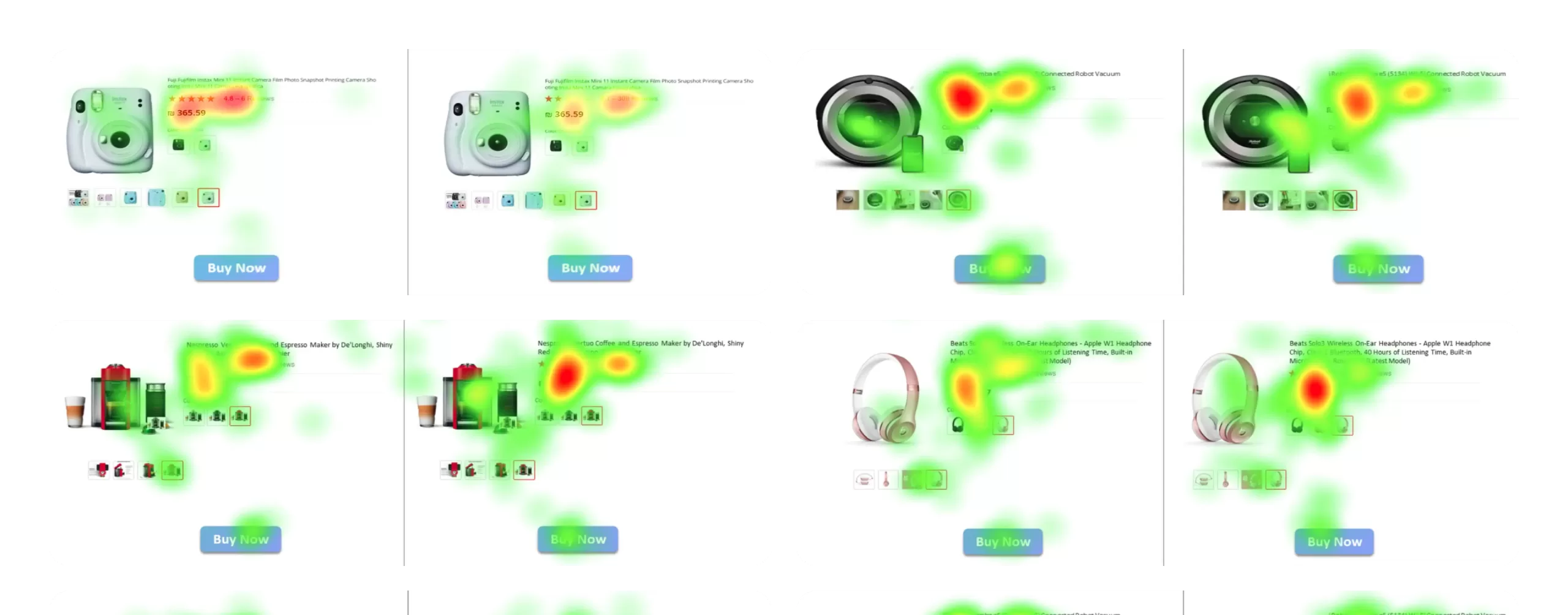

Posted on
29/ 05 / 2022
Timeframe
5 Weeks
Role
Research, interviews, data analysis
Proposal
Academic Team Project
01
Online Purchase Decisions
This case study focuses on understanding how users make purchasing decisions online using eye-tracking technology. As part of a boutique course during my undergraduate studies, I had the opportunity to explore user experience processes in a lab setting. The innovative tool of eye tracking enables a quantitative analysis combined with recommended methodologies to derive significant conclusions and insights. The primary objective was to investigate the influence of product ratings and the number of reviews on consumer decisions in an online shopping context.
Research Question
The study aimed to answer: How do product ratings and the number of reviews influence user choice in an online shopping environment where multiple sellers list the same product with varying ratings and reviews?

02
Methodology
Participant Selection and Pre-Screening
Participants, all above 18 years old, were pre-screened to ensure they were regular online shoppers unfamiliar with the experiment. They were also confirmed not to have participated in any other eye-tracking analysis. This pre-screening ensured that all participants approached the study with a fresh perspective, allowing for unbiased responses and genuine interactions with the experimental setup.
Experimental Setup and Equipment
The study was conducted using an advanced eye-tracking system from Tobii, utilizing two computers—one designated for the user interface and another for real-time data display and recording. Additionally, a computer monitor and a television screen were used to present the data, creating a controlled environment that simulated real online shopping scenarios. The experimental setup also included a prototype that mimicked an online shopping site where each screen required users to choose a product to purchase, focusing on the variables of product rating and the number of reviews.
Data Collection Methodology
Two types of screens were utilized to present the experimental data to the participants: a standard computer monitor and a larger television screen. This arrangement was designed to simulate a realistic online shopping environment while allowing for detailed tracking of the participants’ eye movements as they navigated through the shopping tasks.



03
Data Analysis
The results were segmented by gender, age, and areas of interest to ensure no other factors influenced the outcomes. The analysis sought to identify patterns in how different users prioritize ratings and reviews when making purchase decisions.
Results
Rating Influence: 4 participants reported focusing solely on the product ratings, ignoring the number of reviews.
Review Count Influence: 3 participants chose products based on a higher number of reviews, indicating a trust in crowd-sourced opinions.
Combined Assessment: 2 participants considered both the rating and the number of reviews, integrating these factors to make a balanced decision.
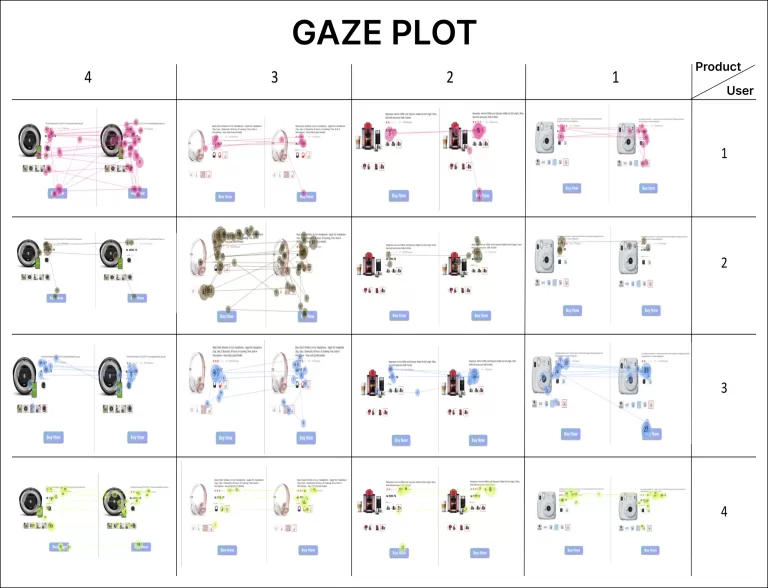
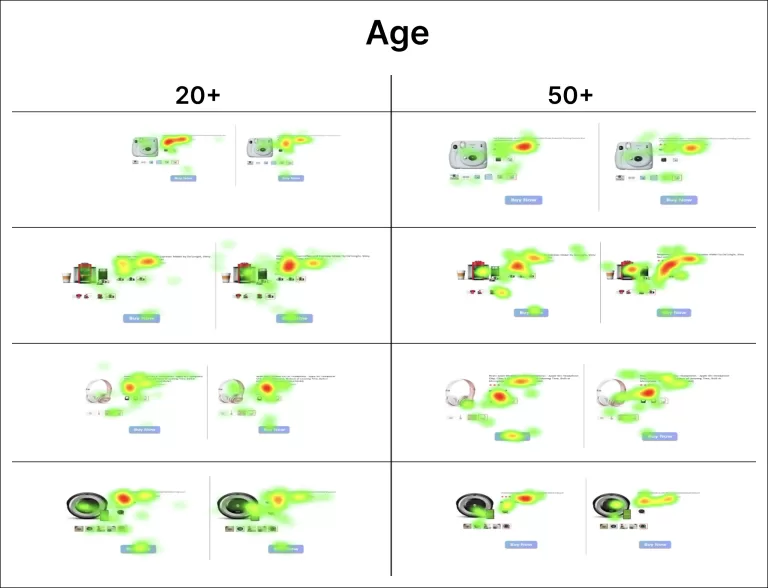
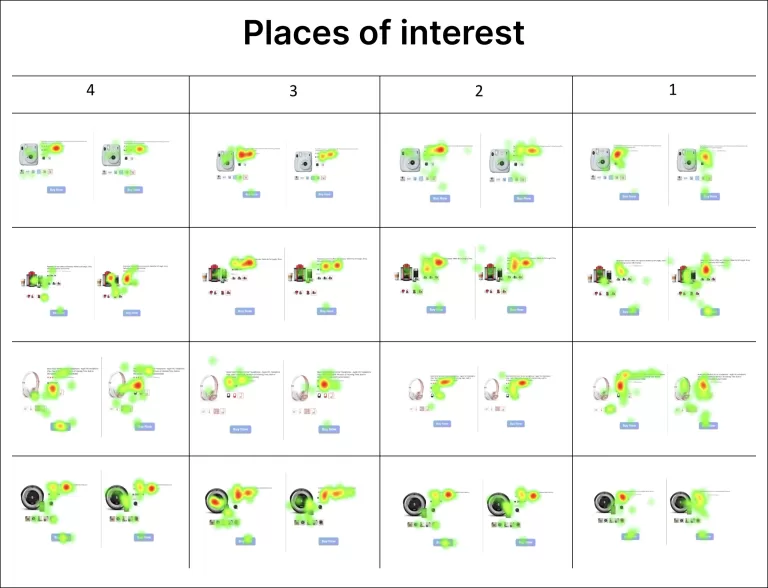
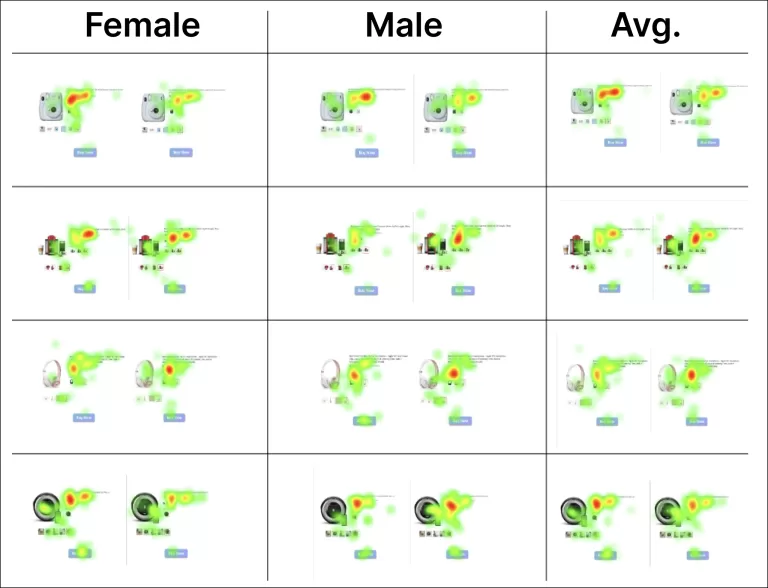
04
Conclusion
This case study highlighted the significant role of product ratings and reviews in influencing online purchasing decisions. By employing eye-tracking technology, it was possible to visually confirm and analyze the decision-making process, offering a detailed insight into consumer behavior dynamics in digital environments. This research can assist in optimizing online marketing strategies and improving user interface design to better align with consumer preferences and behaviors.
findings
The findings from this research provide valuable insights for e-commerce platforms on the importance of these elements, suggesting a focus on managing product reviews and ratings to enhance consumer trust and satisfaction.